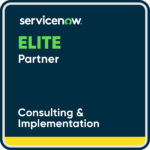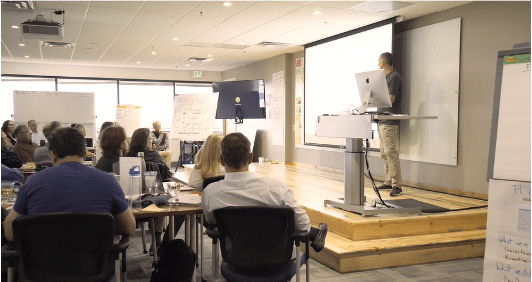
It’s no surprise employees equipped with the correct tools make for a more satisfied workforce, who in turn provide a better Customer Experience. Accelare’s employee workflow approach introduces a new way to unlock the power of ServiceNow.
Whether your organization is using traditional waterfall, Agile Scrum or some hybrid methodology, today’s SDLCs are insufficient to drive Digital Transformation because they assume the users have already conducted the transformational discovery and design necessary to initiate that change… Unfortunately, this is never the case.
Business sponsors do not know what new technologies (platform-as-a-service, AI to name two) are capable of until they see the impact the new technologies can have on services and process design. Equally, technologist don’t understand all the intricacies of the business need, and therefore, typically take a passive, “order taking” posture resulting in projects that automate existing processes rather than reengineering and transforming them.
Accelare’s Prescriptive Design incorporates an iterative, transformational discovery and design process necessary for Digital Transformation using a well-structured, collaborative approach between the business and the technologist. Prescriptive Design demonstrates how new technologies can be used to reengineer and design new digital business models. Prescriptive Design takes a more assertive approach within the SDLC replacing passive order taking by demonstrating how emerging technologies enable the design of new digital business models – the results will amaze you.
Steve Job’s famously stated this about the design and innovation process. This is the essence of prescriptive design. If you are developing a digital business model the people who designed and operate the analog business model are not the place to start for your transformation. Most IT organizations and vendors SDLC is to “ask the business what they want” this is the wrong way to think about it. Start with the power of the platform and show the business the art of the possible.
Accelare works with the CIO to develop these new capabilities and to facilitate the needed changes to the both he Strategy process and the SDLC. The chicken and egg problem of what comes first technology or strategy must be clearly addressed the Prescriptive Design Engineering process does this.
Applying new technologies to transform your business model requires fundamental changes to the system development life-cycle (SDLC) your IT organization and business use. Whether you are using traditional waterfall style life-cycles or agile/scrum approaches to business requirements they are both insufficient in an era of digital transformation.
The stakes are higher now – IT and your software suppliers cannot sit back and ask the business owners what they want – they will describe what they do today. Applying new technologies to your old business processes will lead to automating departments and legacy processes which will not get to the root cause of performance issues and innovation opportunities.
Prescriptive design is a new pattern for SDLC where the IT organization and your platform vendors “go-first”. They prescriptively show the business the capabilities of the platform and use those new digital capabilities to design the business process. These new designs can then be implemented by using structured/agile approaches for rapid implementation.

“Accelares’ Prescriptive Design Engineering method has transformed how the business, IT and our technology vendors work together. This is one of the most important changes we have made not for IT but across the enterprise and with our key platform vendors.” ~ CIO of Major Insurance Company
Take our 4-minute, 12 question disruption assessment